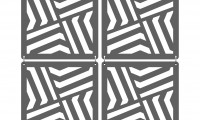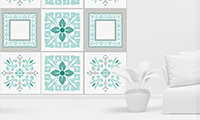18 Sep


Posted By
0 Comment(s)
13521 View(s)
What trends unto paintings exist?
There is no more exclusive gift than an original painting for the interior of your home. By right, painting is the oldest form of art, whose main task is to convey visual images, by applying paint, on any basis.
What are the trends in paintings:
Before turning our attention to the current trends in paintings, let's see what the types of painting are, with the help of Colors of Life: monumental painting; easel painting, theatrical painting, decorative painting, miniature, and icon painting.
Early painting technique
This is a painting with tempera paints on a board covered with gesso. The classic technique of easel painting is an oil painting, on canvas (oil painting). Sometimes modern artists use hard cardboard or plastic instead of canvas and colored relief pastes or acrylic paints instead of oil paints.
In the 15th century, thanks to the inventions of the artist Jan van Eyck, oil painting gained recognition and became traditional in Europe. Until the 19th century, oil painting was performed in consistency: a multi-layered primer was applied to the canvas, sometimes with an imprimatur; then drawing, painting, writing, and painting with glazing and varnishing are applied.
To make the painting more vivid and realistic, artists used a system of linear and aerial perspectives. They applied the laws of chiaroscuro and knowledge of proportions and anatomy. Stroke patterns, color, vibration, and texture are used to represent dynamism or static in painting.
Abstractionism
This is a mode of reflection of the artist, as a result of which a work appears, the result of his reasoning and concepts. The artist can stylize natural forms, semiotic signs, and different content. Abstractionism, as a trend in paintings, represents a rejection of the classical visualization of objects, people, and nature with the ultimate generalization - the depicted. This is art under the sign of "zero forms", or objectless art, which was formed in the first half of the 20th century. This direction has retained its relevance to this day.
Realism
Here we are talking about Common sense style, a trend in paintings, objectively reflecting reality with artistic means. The images represent reliable images, separated characteristic features of the representation. The genres are portrait, still life, landscape, and multi-figure compositions.
Surrealism
Sigmund Freud's theory of psychoanalysis had a great influence on the development of this style of painting. Very often, surrealist artists use images from their own dreams when creating paintings. The features of the style of surrealism are the following:
- Irrationality;
- Entrepreneurship in the image;
- A phantasmagorical plot;
- Paradoxical combinations and forms;
- Use of symbols.
- Modernism
It features bold and colorful imagery. A collective style appears that represents arts such as Cubism, Fauvism, Expressionism, Abstractionism, Futurism, Dadaism, Kinetic Art, Surrealism, Hyperrealism, Pop Art, Op Art, etc.
In conclusion, trends in paintings
The philosophical origins of modernism at the beginning of the century turned into new ideological concepts, the basis of which was based on irrationalism, i.e. recognition of the impotence of the human mind in the knowledge of the universe, recognition of its "chaotic" beginning.
















































